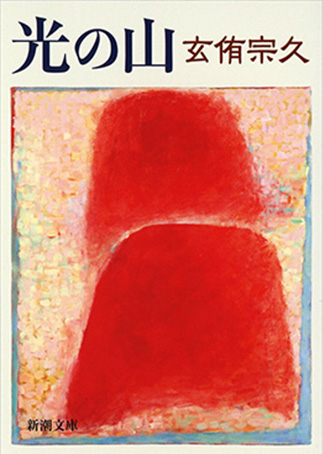
TŌHOKU
Hikari no yama
[Mountain of Light]
Shinchōsha (Shinchō Bunko), 2016. 210 pp. ¥460. ISBN 978-4- 10-116657-5.
Also published in: French and Korean
When disaster struck on March 11, 2011, the Akutagawa Prize–winning author was the chief priest at the temple of Fukujūji in his hometown of Miharu, Fukushima Prefecture, which is within a 50-kilometer radius of the Fukushima Daiichi Nuclear Power Plant. Soon after the earthquake, he was tapped for the Reconstruction Design Council in Response to the Great East Japan Earthquake, and he has been conducting lectures and other activities around the country since then.
“As heartless as it may sound,” he says, “I couldn’t live without writing novels, just like we continue to breathe the air regardless of radiation levels.” This collection of six stories—which were born from that experience and which faithfully reflect the changing situation over the two years since that fateful day—captures the truth of the people living in the disaster area of Fukushima more vividly than any image or news report. It allows us to see the full scope of the tragedy of this disaster.
The figures who appear here include the young girl who has been too scared to drink the tea in her teacup since losing her parents in the tsunami. The mother carrying her infant as she looks for the body of her missing husband, and the government official at the morgue who helps them while dealing with the loss of his own daughter and grandchild. The young wife whose fear of radiation drives her to flee to Hokkaidō and to divorce her husband, who has chosen to live in a shelter, and their old friends—a husband and wife—who continue to live in Fukushima while harboring mixed feelings toward the woman.
Needless to say, this work is about more than just these individual stories of misfortune. What did the disaster actually take away from these people, and can they ever recover what they lost? How should they go on living? And what is the meaning of a human life? The stories here thrust pointed questions at the reader, but a benevolent light somehow manages to shine through. Surely this is a testament to the priestly virtue of the author and the inner beauty that lives on in the hearts of people in Japan’s northeastern Tōhoku region. (OM)
“As heartless as it may sound,” he says, “I couldn’t live without writing novels, just like we continue to breathe the air regardless of radiation levels.” This collection of six stories—which were born from that experience and which faithfully reflect the changing situation over the two years since that fateful day—captures the truth of the people living in the disaster area of Fukushima more vividly than any image or news report. It allows us to see the full scope of the tragedy of this disaster.
The figures who appear here include the young girl who has been too scared to drink the tea in her teacup since losing her parents in the tsunami. The mother carrying her infant as she looks for the body of her missing husband, and the government official at the morgue who helps them while dealing with the loss of his own daughter and grandchild. The young wife whose fear of radiation drives her to flee to Hokkaidō and to divorce her husband, who has chosen to live in a shelter, and their old friends—a husband and wife—who continue to live in Fukushima while harboring mixed feelings toward the woman.
Needless to say, this work is about more than just these individual stories of misfortune. What did the disaster actually take away from these people, and can they ever recover what they lost? How should they go on living? And what is the meaning of a human life? The stories here thrust pointed questions at the reader, but a benevolent light somehow manages to shine through. Surely this is a testament to the priestly virtue of the author and the inner beauty that lives on in the hearts of people in Japan’s northeastern Tōhoku region. (OM)

Translation rights inquiries
Shinchōsha Publishing Co.
(attn. Overseas Publications Section)
71 Yarai-chō, Shinjuku-ku, Tokyo 162-8711
Email: ops@shinchosha.co.jp
(When sending an e-mail, please enter a half-width character "@" instead of a full-width character "@.")

